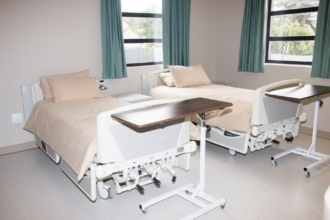3 ways to build your hospice census
- Partner with other healthcare entities
- Train staff on making the intake process easier
- Tap into non-physician referral sources
Hospice care is a sensitive subject because of its inherent finality. Everyone — from family members to physicians to facility staff — wants patients to live whatever brief time they have left in comfort and dignity.
While this goal should always remain top of mind, as a hospice owner, you must also don your business hat occasionally and do what’s necessary to keep the doors open. One important task is figuring out ways to maintain a continuous flow of patients, so your facility can stay financially healthy. Below are some ideas on how to increase your hospice census through referrals.
What a hospice census is and what it indicates
A hospice census is the number of patients a hospice cares for and a general indicator of facility size. Most industry professionals refer to average daily census (ADC), which is how many patients the facility cares for on average each day.
To calculate ADC, divide the sum of the daily census for a given period by the number of days in that period. For example, if the sum of the daily census count is 1,500 in the month of April, the ADC would be: 1,500/30 = 50.
Your ADC is an important indicator of financial health for your hospice. Increasing your census is key to keeping your hospice running, staff employed, and patients comforted and cared for in their final days. Keep reading for a few tips on how to increase your ADC.
How to increase your hospice census
Here are three ways to build your hospice census through referrals.
1. Partner with other healthcare entities
“A key element of increasing your ADC is creating and maintaining strategic relationships with your healthcare partners,” says Cassie Mitchell, president and CEO of HopeWest. “We, as hospice providers, must understand their issues and, if we can solve them, become a strategic partner in solutions.”
Mitchell gives the example of one hospital partner that needed to find ways to address a growing morbidity penalty. Together, the hospice and its hospital partner created a multipronged approach — including scatter beds and general inpatient care tactics — for those who were too medically fragile to move.
“These efforts translated into an increase in referrals from primary and specialty providers associated with the hospital system,” Mitchell explains. “As a hospice, you must prove immediate benefit through addressing urgent needs. Building off that partnership, you can then work up to larger-scale initiatives.”
2. Train staff on making the intake process easier for referral sources
Hospice referrals can come from a number of sources: hospitals, nursing homes, physician’s offices, patient family members, and even the patients themselves. What these sources all have in common is that they want a stress-free intake process.
Busy hospital staff who care for numerous patients don’t want to spend a lot of time on the phone with your team just to hand off a single patient. The same goes for staff at nursing homes and even small clinics. Similarly, patient family members are already in a fragile emotional state — any friction in getting their loved one admitted could push them to a competitor or even toward giving up the hospice option altogether.
So create a seamless intake process and train your staff well in not only how to proceed through the process but also in how to handle discussions with the various referral sources. Administrative tasks may be important, but your staff should lead with care first, especially when interfacing with patients and their families. Be sure they’re comfortable with the idea of hospice and choosing your facility before pushing paperwork.
3. Tap into non-physician referral sources
Physician referrals from facilities like hospitals are typically the go-to for most hospices, but it can take a while to build a rapport and become a hospice of choice. Hospices often neglect other referral sources, such as patient families. Marketing to these individuals can be a good way to increase your hospice census for both the short and long term, as they may provide word-of-mouth referrals to their friends and colleagues.
How to make the intake process and other hospice operations easier with Jotform Enterprise
Jotform Enterprise is a multifaceted, secure solution fit for the various needs of hospices. From hospice admission to staff collaboration to patient information management, Jotform gives you the tools to get more done faster so your staff can focus more on patient care and less on manual administrative tasks.
Help your staff streamline intake and discharge as well as improve operations with a number of easy-to-build online forms:
- Hospice referral form: Get all the details you need from hospital and other referrals with this form, including patient and physician information.
- Hospice consent form: You can ensure you have a proper record of every patient’s acceptance of care with this form.
- Hospice discharge summary form: This form can help you maintain a proper record of every patient’s discharge, including physician instructions and prescribed medications for care at home or another facility.
These and other hospice care forms help make your hospice admissions process more streamlined for patients and employees alike because they’re easy for administrators to create and patient families to access. Plus, you can easily customize the forms with our no-code builder to suit your hospice’s unique needs.
In addition, hospice administrators can assign custom permissions to different users, ensuring that only the right people see confidential patient information. Start building forms for your hospice business today.
Photo by Matt Bennett on Unsplash


















Send Comment: